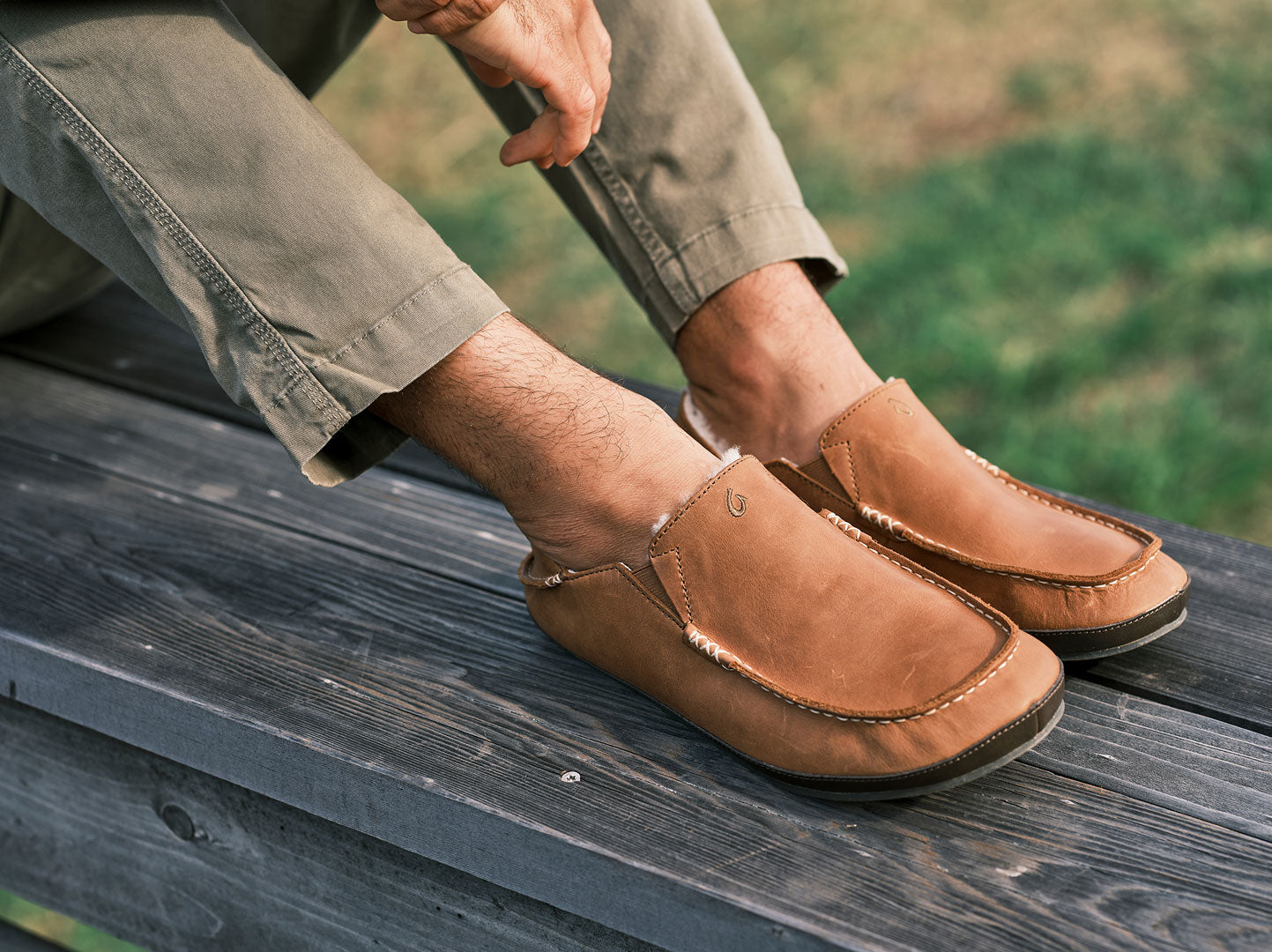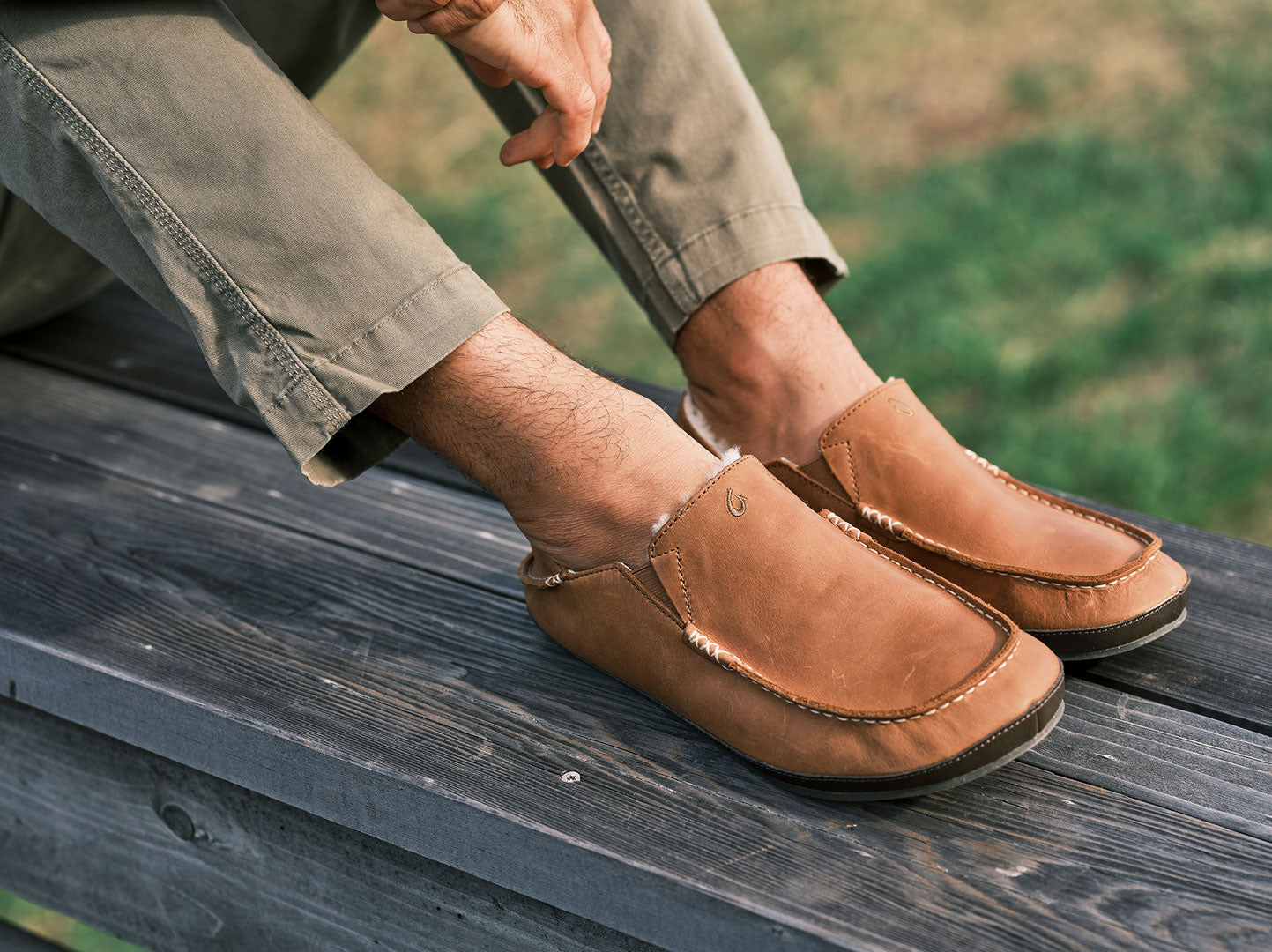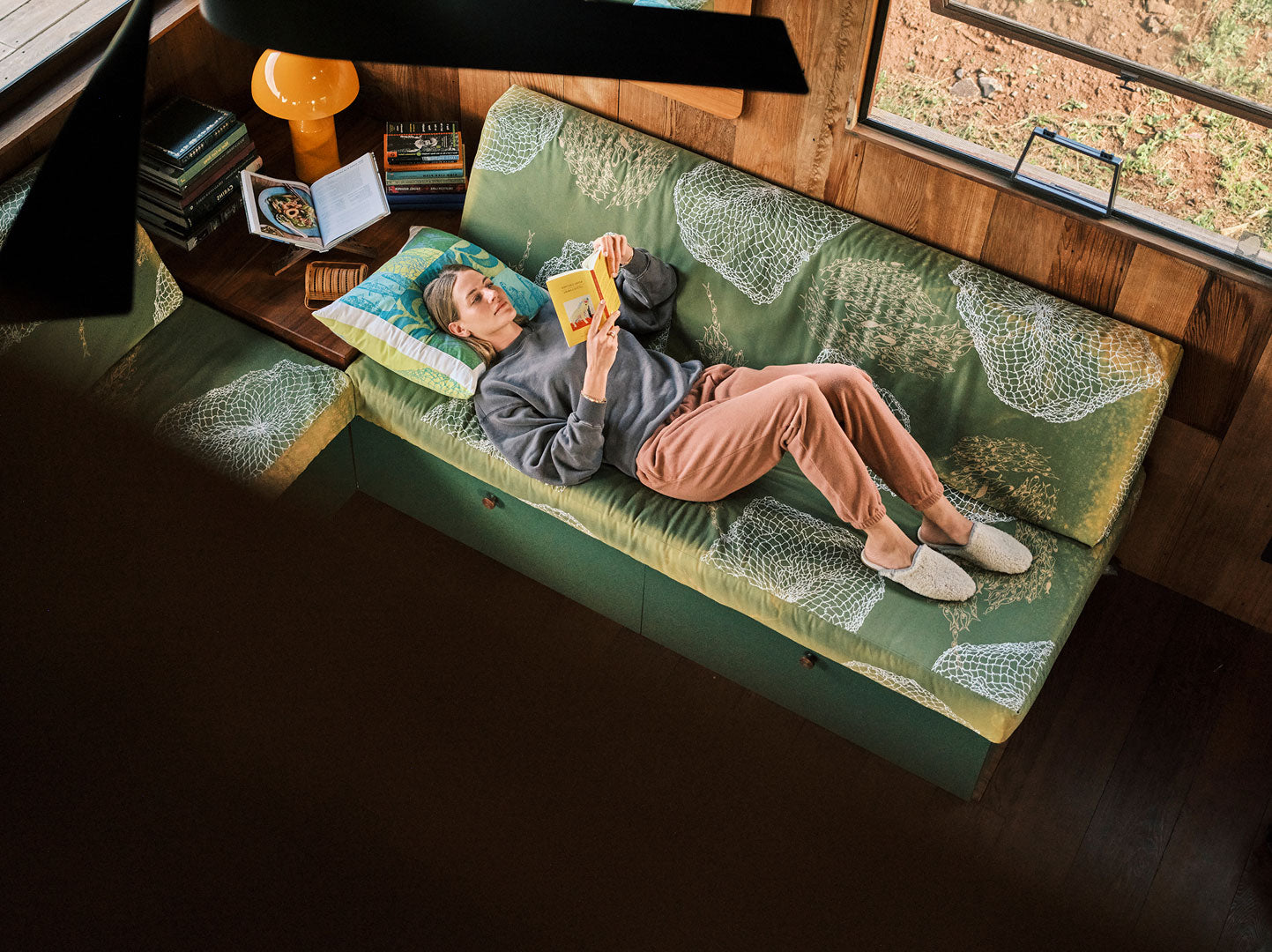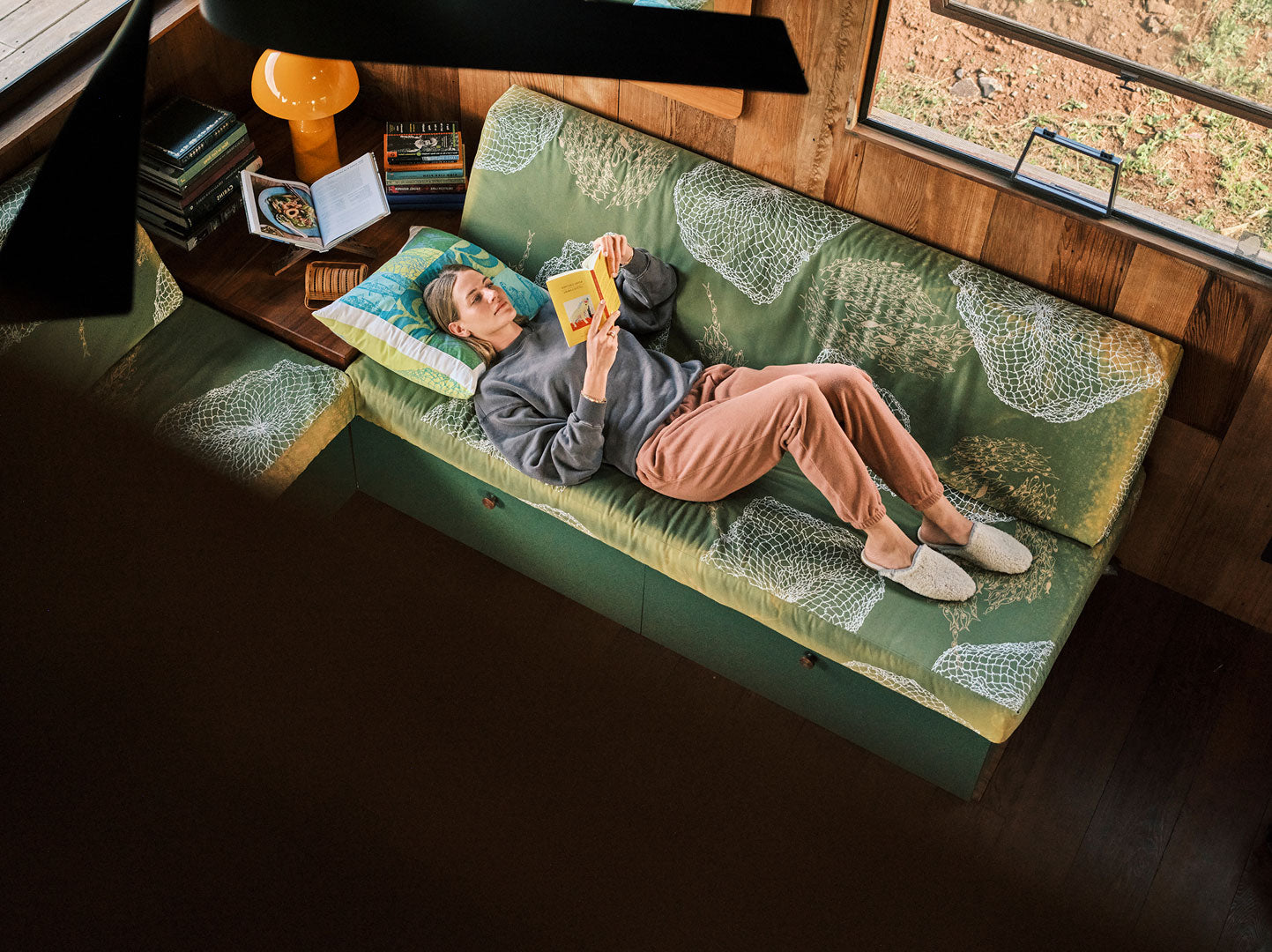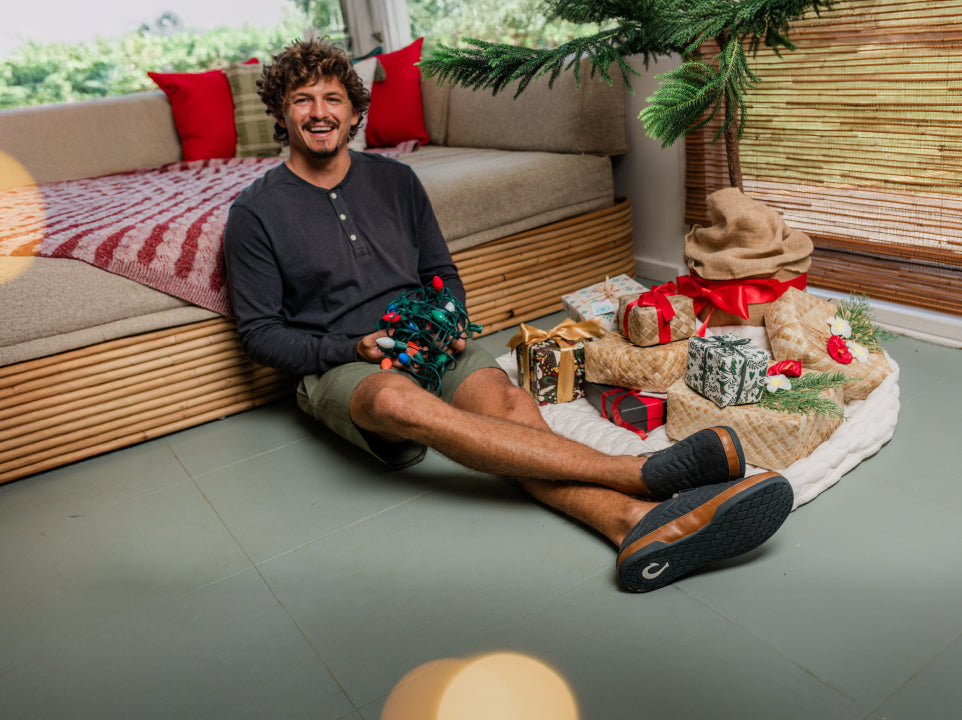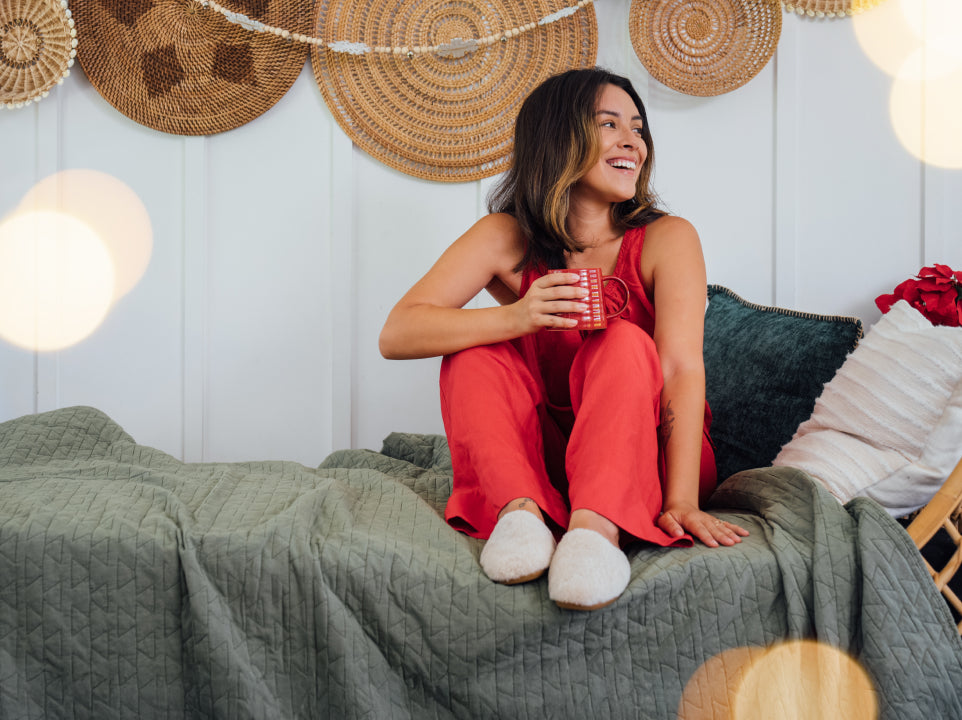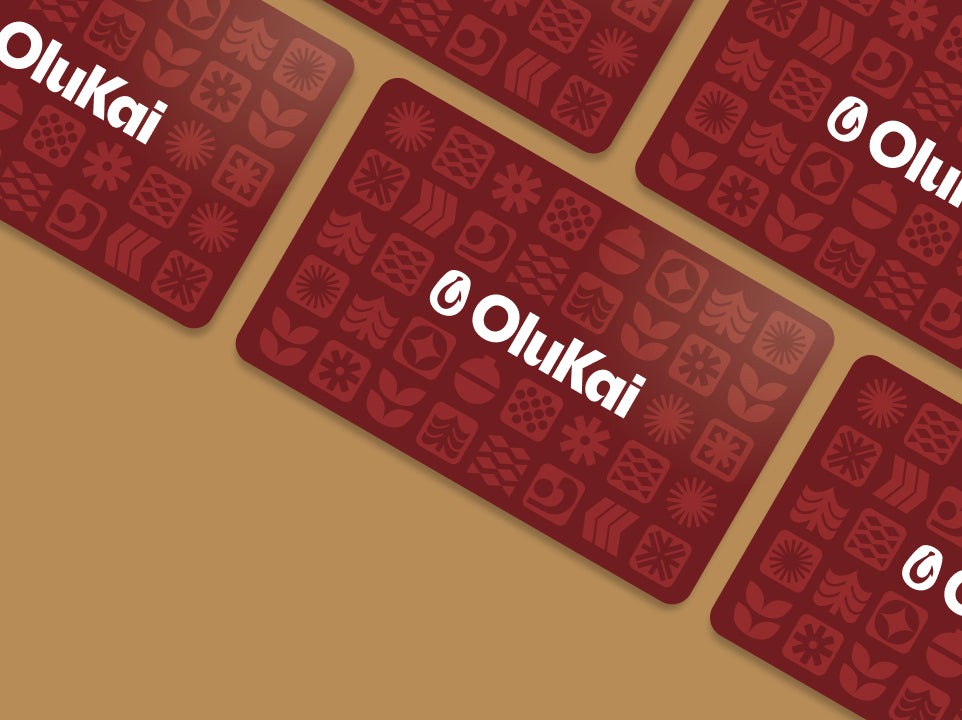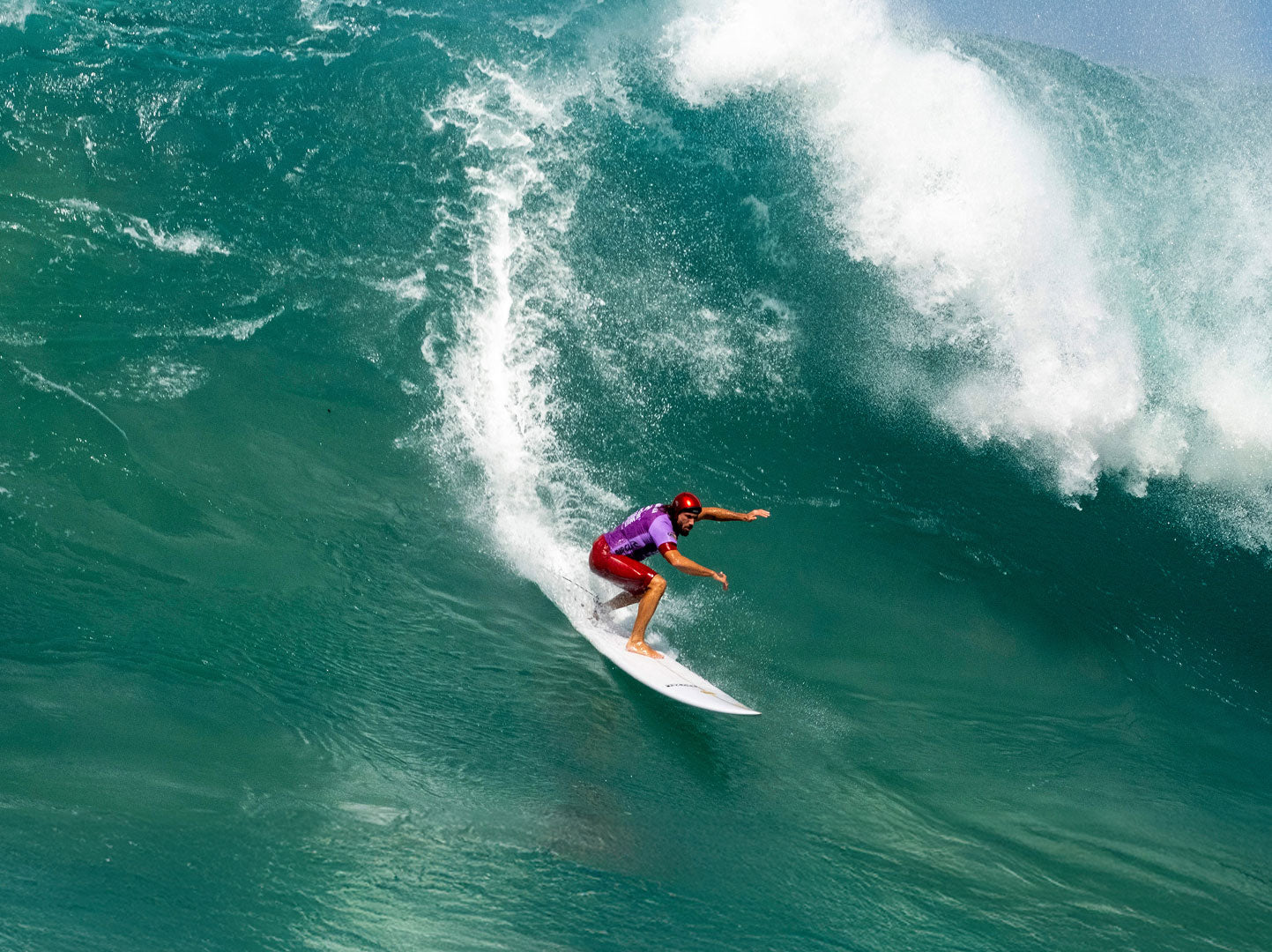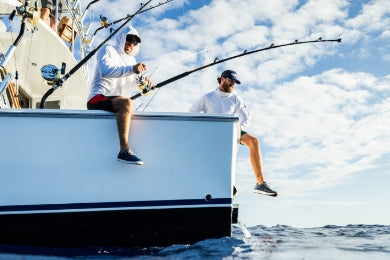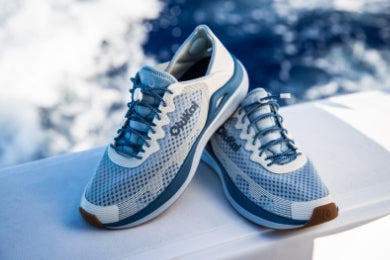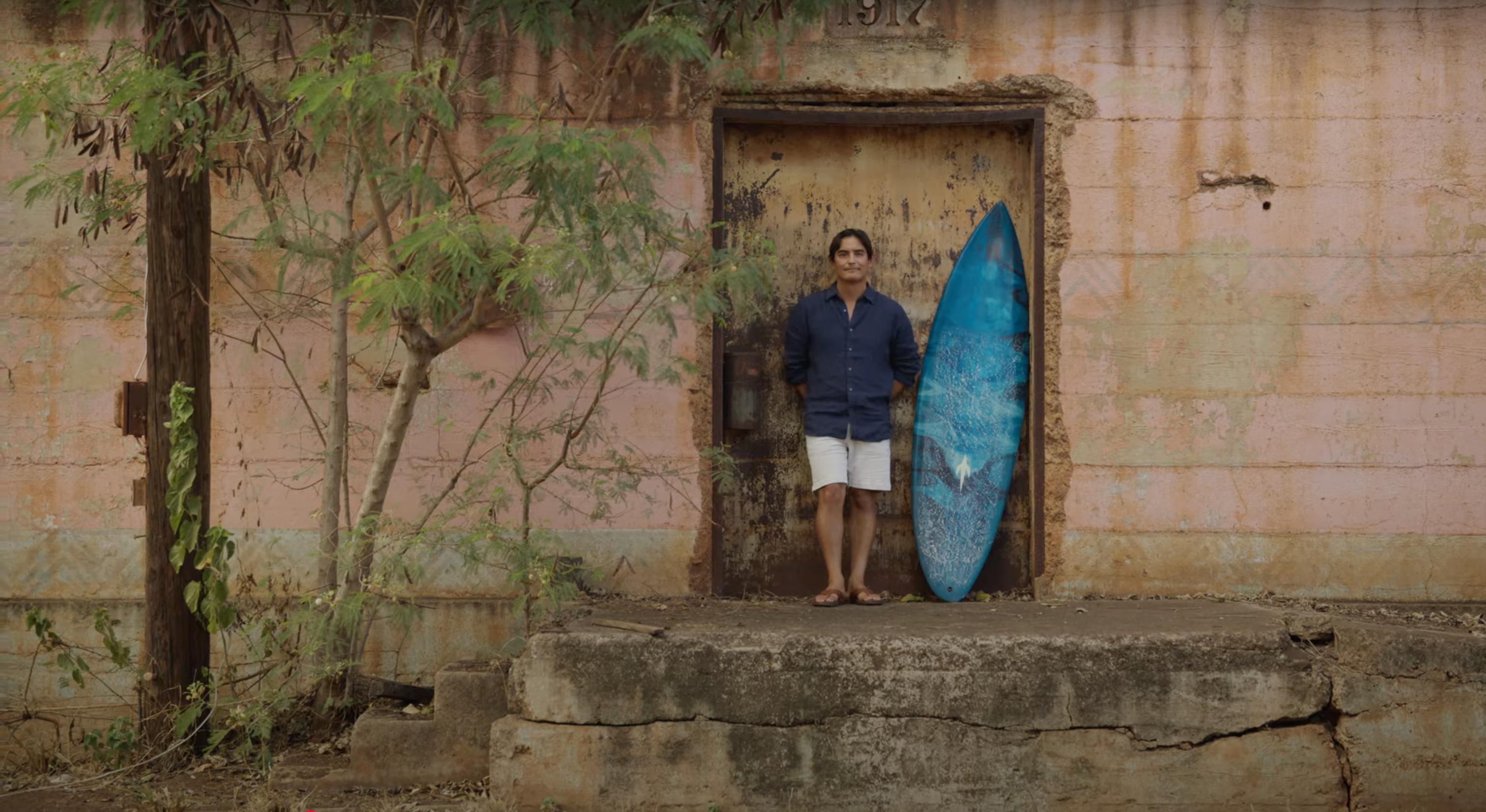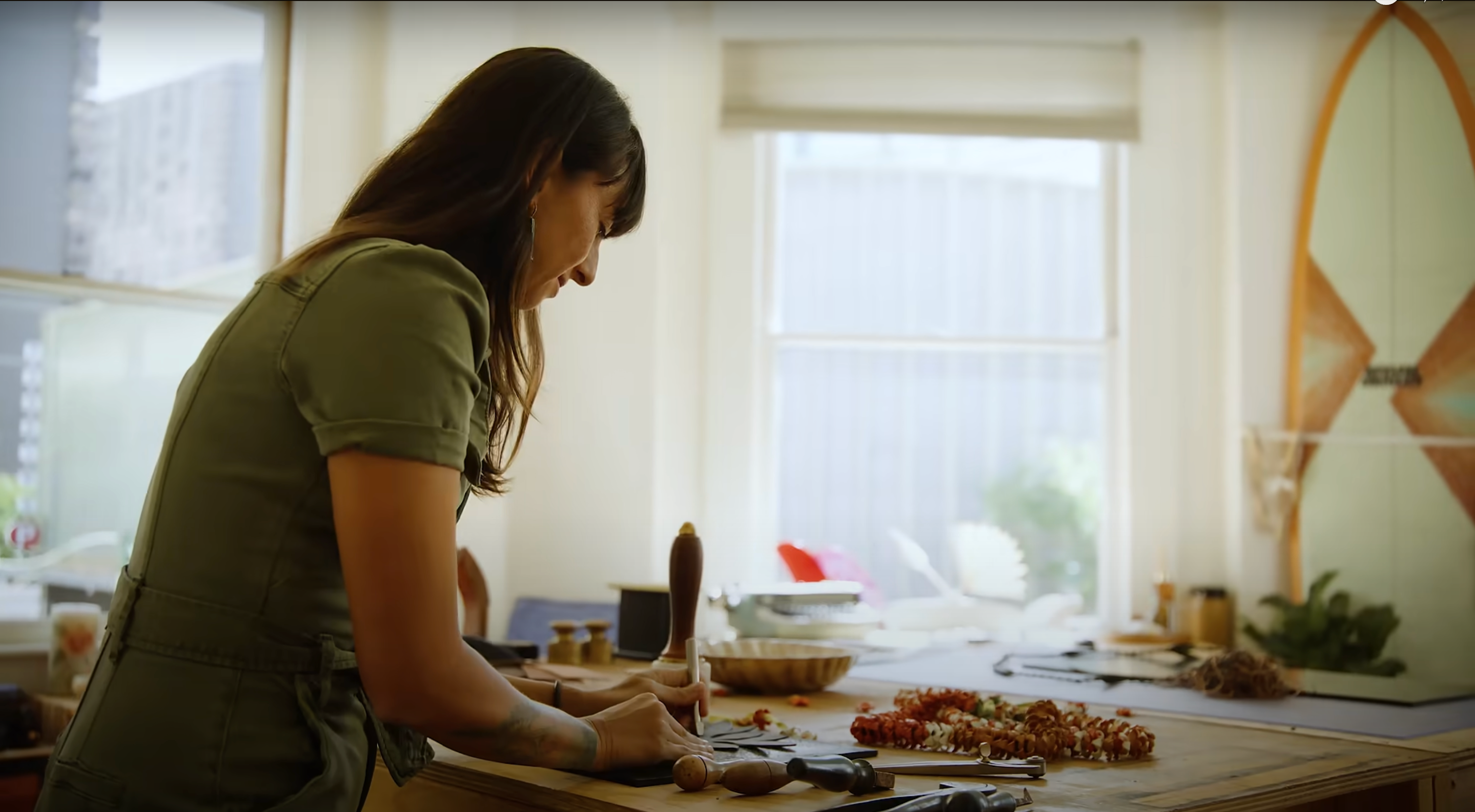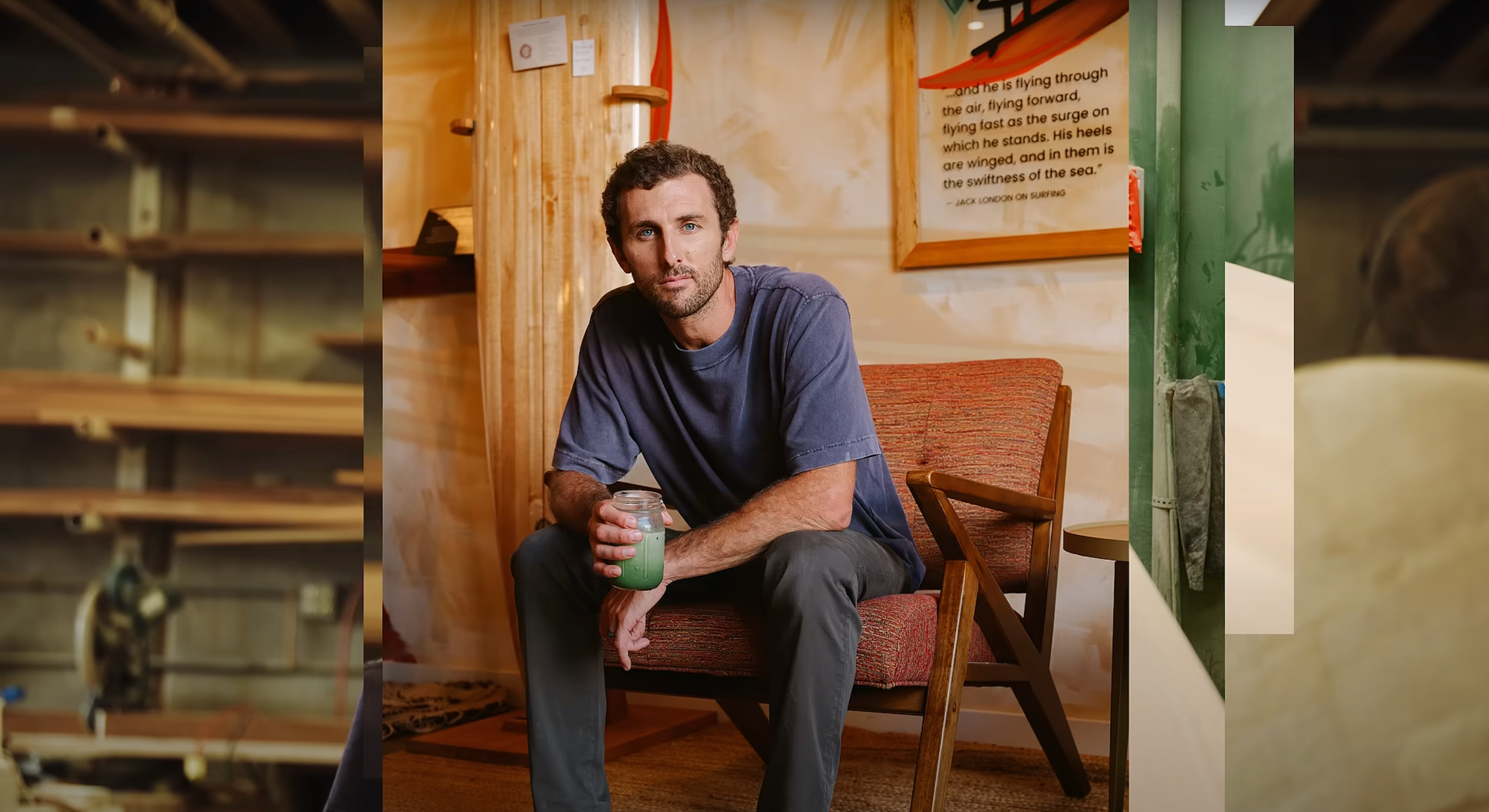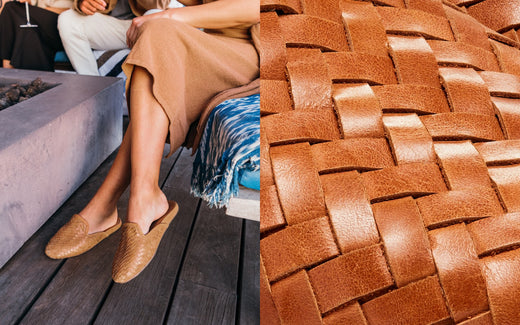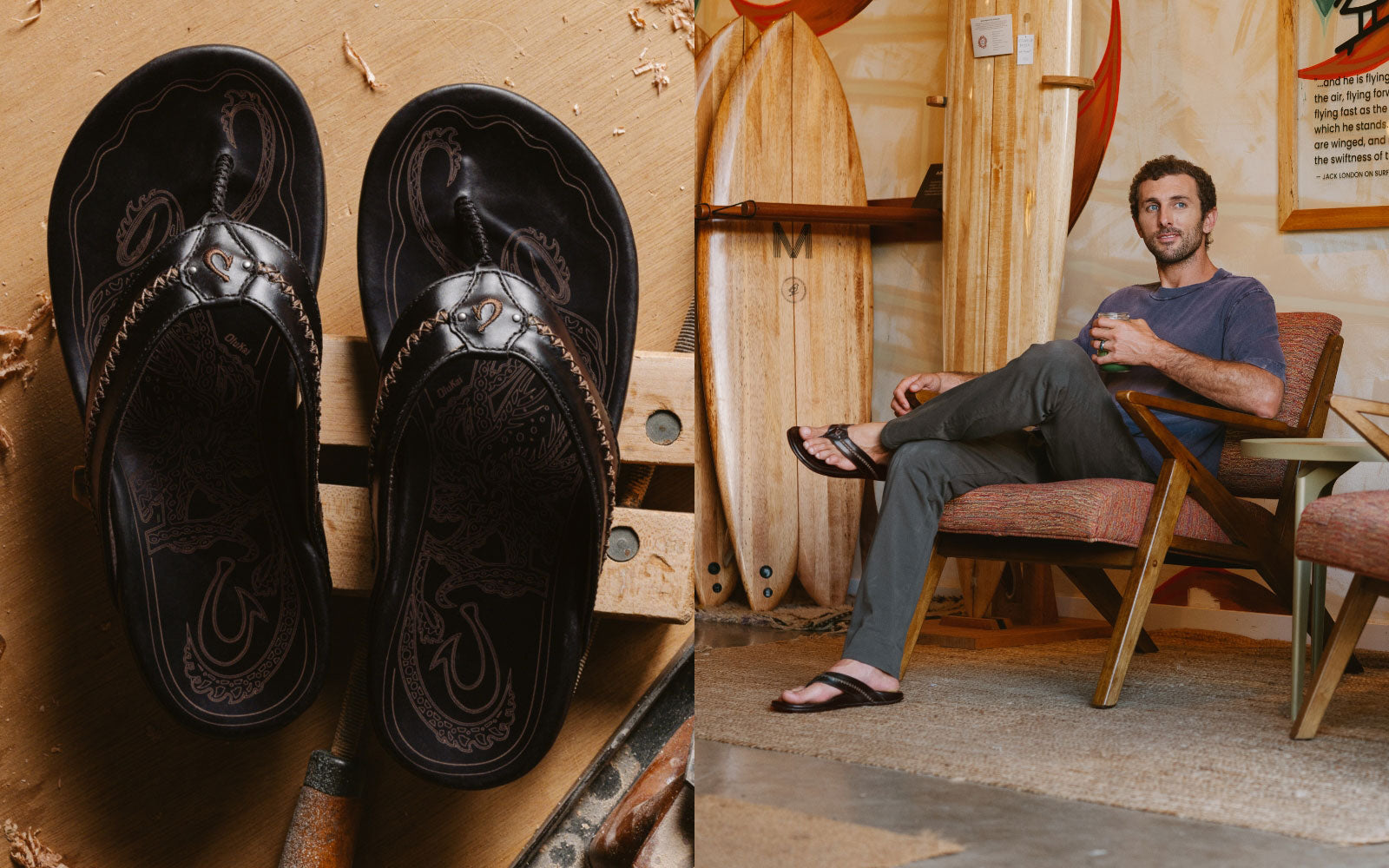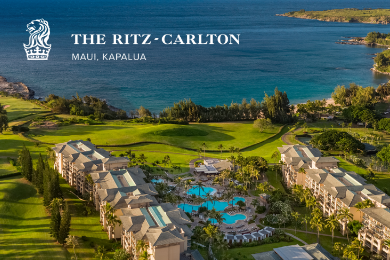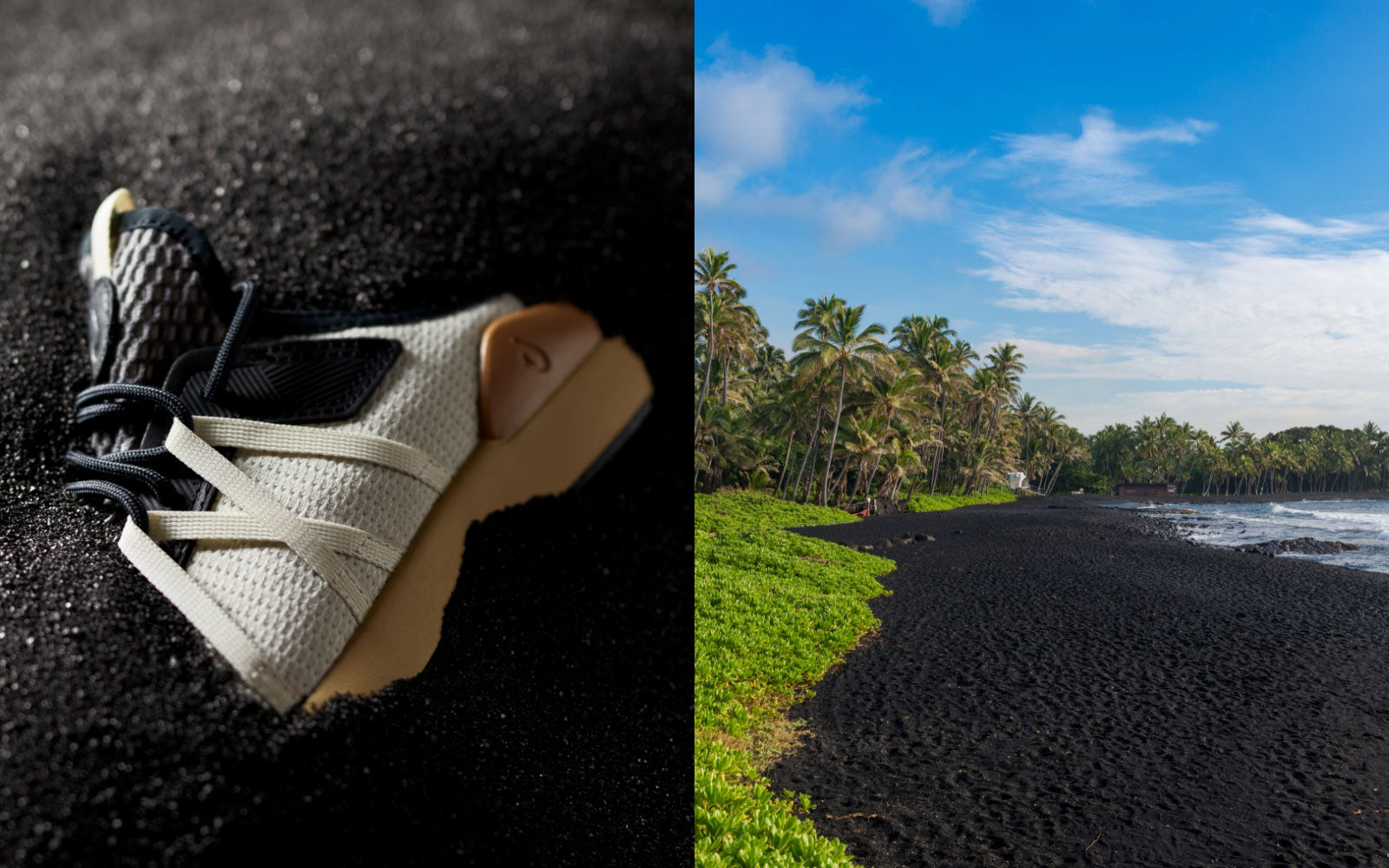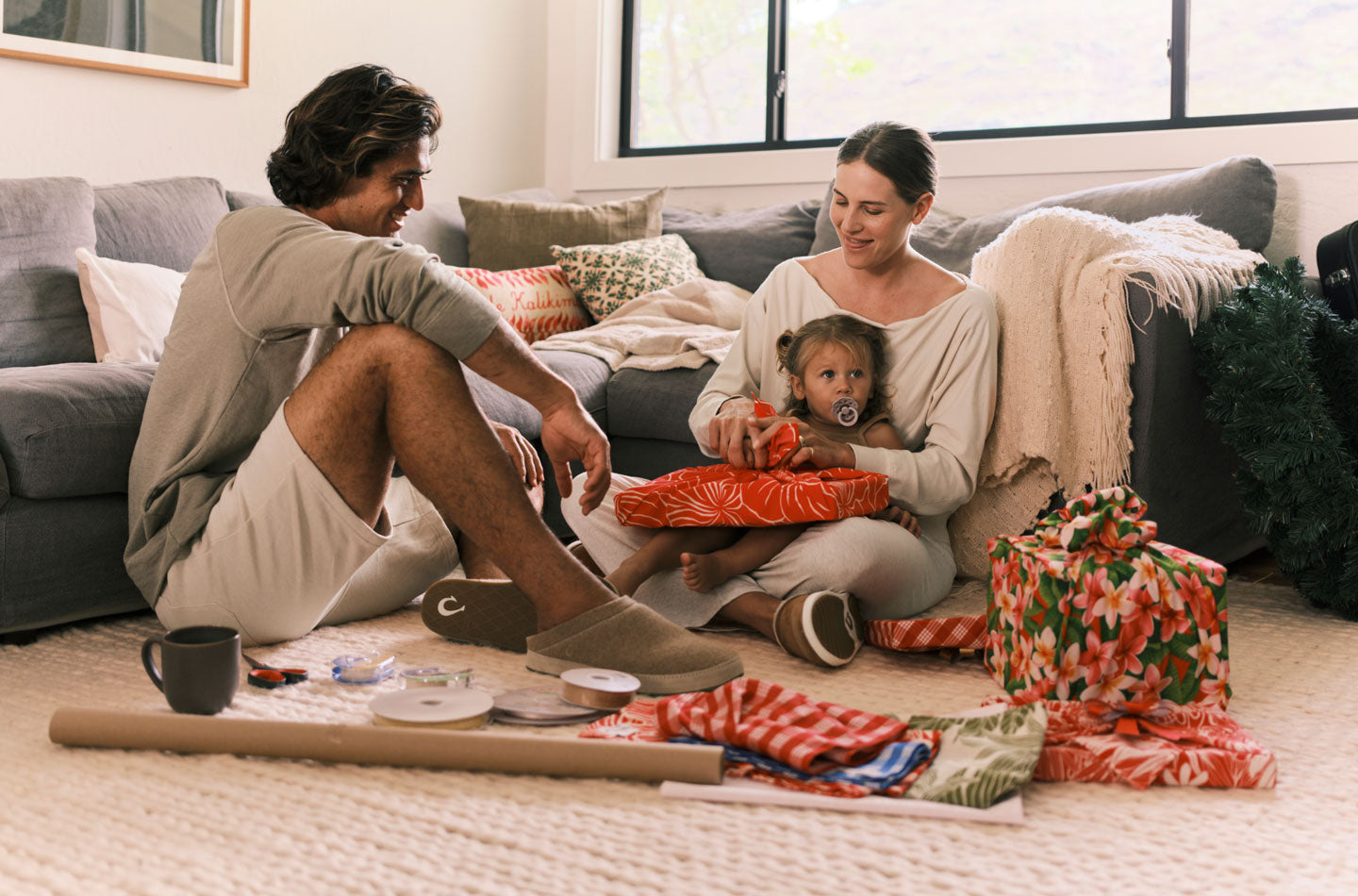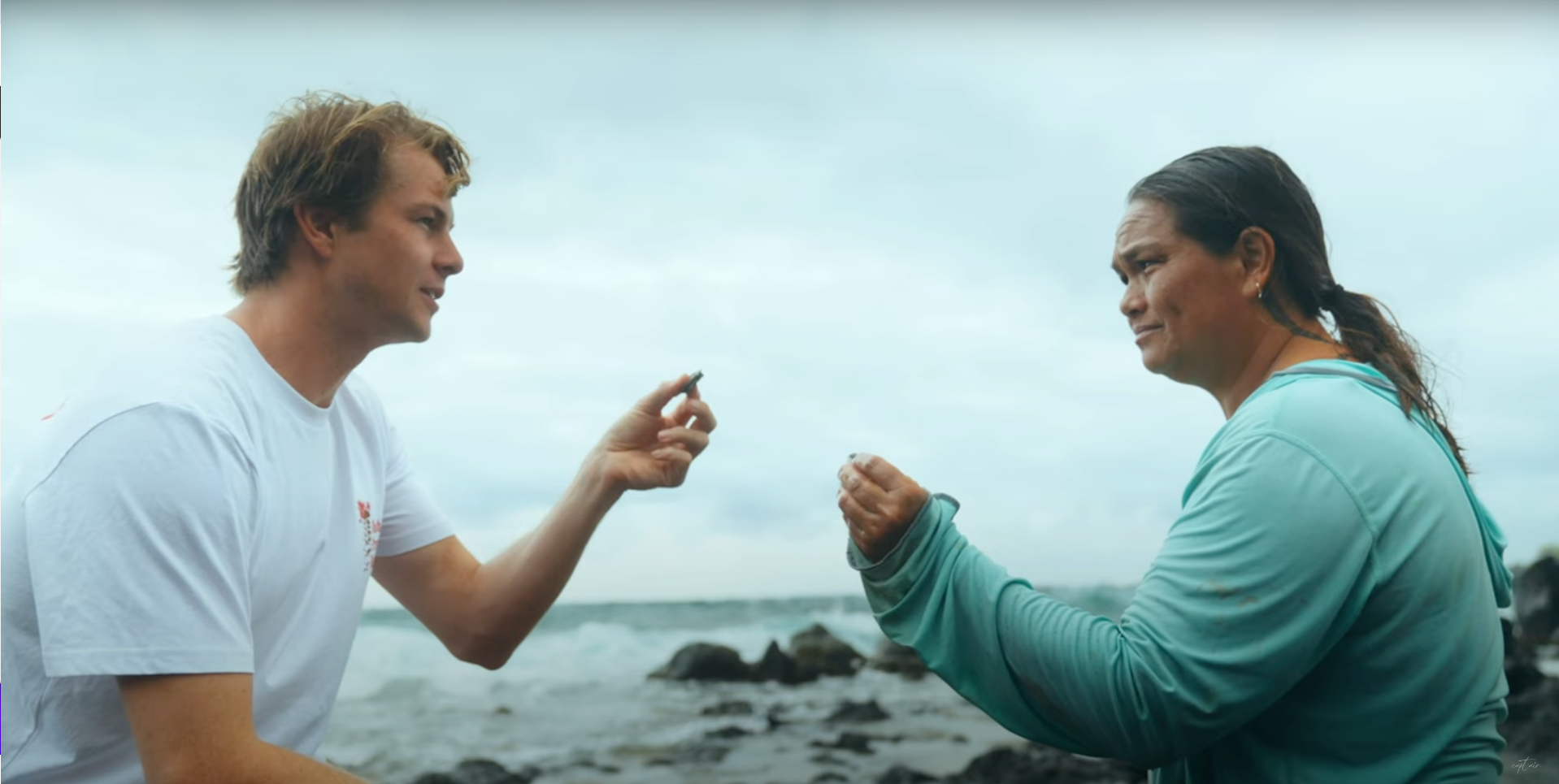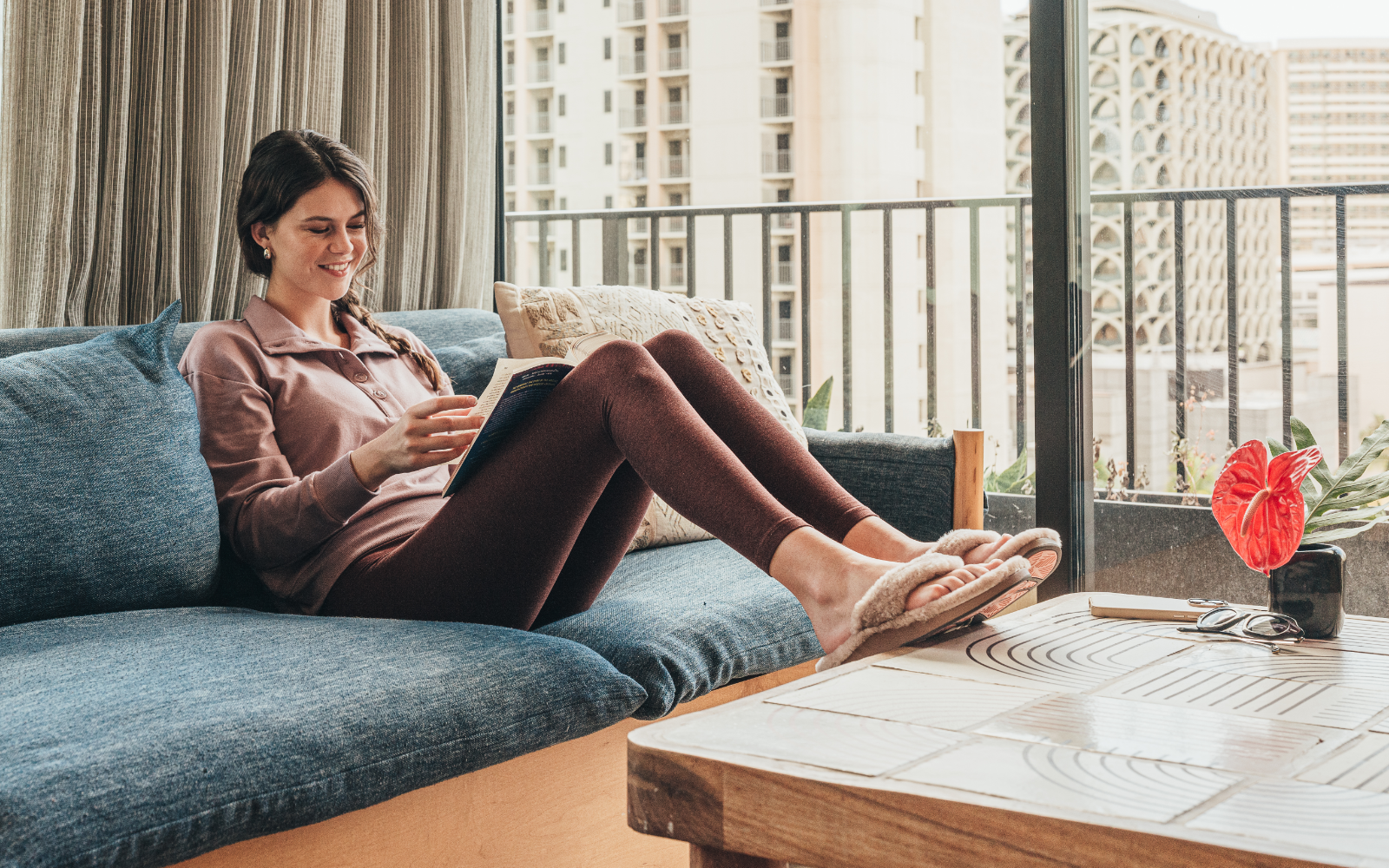 In the heart of Honolulu, in an area known as Kaka’ako, muralist Kamea Hadar is caked in paint. Splatters, drops and dots have taken to his clothing and body like a second skin. He has two printed pieces of computer paper on the ground that he references after every few calculated strokes. There is a face on the paper and it is glaring at him. Fiercely. The face is of the late Master Navigator Mau Piailug. Mau “Papa Mau” Piailug was a Micronesian navigator from the Carolinian island of Satawal, best known as a teacher of traditional, noninstrument wayfinding methods for deepsea voyaging. Mau's Carolinian navigation system—which relies on navigational clues using the sun and stars, winds and clouds, seas and swells, and birds and fish was passed down to him by his elders through teachings in the oral tradition. The connection between Kamea’s mural and Papa Mau dates back to the early 1970’s and the start of the Polynesian Voyaging Society in Hawai’i. Many anthropologists believed that Polynesia was too vast to be navigated and was settled and discovered accidentally. A small group of educators and Native Hawaiians in Honolulu believed that ancient Polynesians purposely migrated to Hawai’i on double hulled canoes using noninstrument wayfinding methods, like the ones that Mau mastered. This small group formed the Polynesian Voyaging Society in 1973 and set out to confirm that belief by retracing those migrations with their newly built double hulled canoe named Hōkūle‘a (Star of Gladness). The only problem was, there were no Native Hawaiian navigators alive to provide teachings and information. They reached out to Papa Mau in Micronesia to come and teach them and he agreed. This was so significant because there were only six people alive in the world who knew this ancient artform and it was unusual for Master Navigators to teach pupils outside of their own culture (Mau being Micronesian and this group being Hawaiian). Through Polynesian Voyaging Society’s founder Dr. Ben Finney, Mau earned a special fellowship at the EastWest Center at University of Hawai’i and began working with the Hōkūle‘a crew in 1975. The next year, 1976, he navigated Hōkūle‘a and crew to Tahiti on her maiden voyage where they were welcomed by 17,000 people half the population of Tahiti. Over the next 30+ years, Papa Mau taught traditional navigation to many young Hawaiians and Micronesians. Before he passed in 2010, Papa gave Pwo status (Master Navigator) to five Polynesian Voyaging Society members in 2007: Nainoa Thompson, Bruce Blankenfeld, Chad Kalepa Baybayan, Milton “Shorty” Bertlemann and Chad ‘Onohi Paishon. These five members have gone on to teach many more, keeping the art of traditional navigation alive. Which brings us back to Kaka’ako and Kamea staring into the eyes of his mural. It is late April 2014 and while Kamea is stroke by stroke working on this tribute to Papa Mau, the Polynesian Voyaging Society is preparing for the biggest Voyage in its 41 year history. Hōkūle'a and sister canoe Hikianalia will be sailing across Earth’s oceans for a 3 year Worldwide Voyage to expand the global movement toward a more sustainable future. Starting in late May 2014, this Voyage is being led by the five Pwo Navigators taught by Papa Mau from Polynesian Voyaging Society and their younger pupils. And so the artform lives on. Kamea worked with a group of kids from 808 Urban and artist Keola Rapozo on structuring this mural located on the corner of Cooke and Auahi Streets. “The 808 Urban kids are always excited to be a part of any project and to have a chance to paint a wall. All of them knew about Hōkūle‘a and Polynesian Voyaging Society, but many didn’t know who Papa Mau was,” said Hadar. “The project was a great way to educate the kids on who he was in a medium that was fun and interesting to them.” Regarding the specific image of Papa Mau he chose, Kamea added, “I spoke to many people who knew Mau, including Pwo Navigators Bruce Blankenfeld and Nainoa Thompson, as well as 1976 maiden voyage crew member, Uncle Billy Richards. When I was down at Polynesian Voyaging Society headquarters a few of us were looking over photos and I was trying to decide which references to use for the portrait. I picked one that I really liked and without seeing it, Uncle Billy started to describe in great detail his favorite image of Papa Mau. It turned out to be the same photo! Uncle Billy said that it reminded him of a quote: "To be a navigator, you have to be fierce." I ended up painting that quote into the mural. He said that Papa Mau was an amazingly friendly and happy guy, but when he was on the water he was deadly serious about the job at hand. When we looked at the photo together Billy told me "that's the look, the fierce look that told you he'll get you there (Tahiti),” and that’s when I knew I had portrait for the mural.”
In the heart of Honolulu, in an area known as Kaka’ako, muralist Kamea Hadar is caked in paint. Splatters, drops and dots have taken to his clothing and body like a second skin. He has two printed pieces of computer paper on the ground that he references after every few calculated strokes. There is a face on the paper and it is glaring at him. Fiercely. The face is of the late Master Navigator Mau Piailug. Mau “Papa Mau” Piailug was a Micronesian navigator from the Carolinian island of Satawal, best known as a teacher of traditional, noninstrument wayfinding methods for deepsea voyaging. Mau's Carolinian navigation system—which relies on navigational clues using the sun and stars, winds and clouds, seas and swells, and birds and fish was passed down to him by his elders through teachings in the oral tradition. The connection between Kamea’s mural and Papa Mau dates back to the early 1970’s and the start of the Polynesian Voyaging Society in Hawai’i. Many anthropologists believed that Polynesia was too vast to be navigated and was settled and discovered accidentally. A small group of educators and Native Hawaiians in Honolulu believed that ancient Polynesians purposely migrated to Hawai’i on double hulled canoes using noninstrument wayfinding methods, like the ones that Mau mastered. This small group formed the Polynesian Voyaging Society in 1973 and set out to confirm that belief by retracing those migrations with their newly built double hulled canoe named Hōkūle‘a (Star of Gladness). The only problem was, there were no Native Hawaiian navigators alive to provide teachings and information. They reached out to Papa Mau in Micronesia to come and teach them and he agreed. This was so significant because there were only six people alive in the world who knew this ancient artform and it was unusual for Master Navigators to teach pupils outside of their own culture (Mau being Micronesian and this group being Hawaiian). Through Polynesian Voyaging Society’s founder Dr. Ben Finney, Mau earned a special fellowship at the EastWest Center at University of Hawai’i and began working with the Hōkūle‘a crew in 1975. The next year, 1976, he navigated Hōkūle‘a and crew to Tahiti on her maiden voyage where they were welcomed by 17,000 people half the population of Tahiti. Over the next 30+ years, Papa Mau taught traditional navigation to many young Hawaiians and Micronesians. Before he passed in 2010, Papa gave Pwo status (Master Navigator) to five Polynesian Voyaging Society members in 2007: Nainoa Thompson, Bruce Blankenfeld, Chad Kalepa Baybayan, Milton “Shorty” Bertlemann and Chad ‘Onohi Paishon. These five members have gone on to teach many more, keeping the art of traditional navigation alive. Which brings us back to Kaka’ako and Kamea staring into the eyes of his mural. It is late April 2014 and while Kamea is stroke by stroke working on this tribute to Papa Mau, the Polynesian Voyaging Society is preparing for the biggest Voyage in its 41 year history. Hōkūle'a and sister canoe Hikianalia will be sailing across Earth’s oceans for a 3 year Worldwide Voyage to expand the global movement toward a more sustainable future. Starting in late May 2014, this Voyage is being led by the five Pwo Navigators taught by Papa Mau from Polynesian Voyaging Society and their younger pupils. And so the artform lives on. Kamea worked with a group of kids from 808 Urban and artist Keola Rapozo on structuring this mural located on the corner of Cooke and Auahi Streets. “The 808 Urban kids are always excited to be a part of any project and to have a chance to paint a wall. All of them knew about Hōkūle‘a and Polynesian Voyaging Society, but many didn’t know who Papa Mau was,” said Hadar. “The project was a great way to educate the kids on who he was in a medium that was fun and interesting to them.” Regarding the specific image of Papa Mau he chose, Kamea added, “I spoke to many people who knew Mau, including Pwo Navigators Bruce Blankenfeld and Nainoa Thompson, as well as 1976 maiden voyage crew member, Uncle Billy Richards. When I was down at Polynesian Voyaging Society headquarters a few of us were looking over photos and I was trying to decide which references to use for the portrait. I picked one that I really liked and without seeing it, Uncle Billy started to describe in great detail his favorite image of Papa Mau. It turned out to be the same photo! Uncle Billy said that it reminded him of a quote: "To be a navigator, you have to be fierce." I ended up painting that quote into the mural. He said that Papa Mau was an amazingly friendly and happy guy, but when he was on the water he was deadly serious about the job at hand. When we looked at the photo together Billy told me "that's the look, the fierce look that told you he'll get you there (Tahiti),” and that’s when I knew I had portrait for the mural.”
Master Navigator Mau
 In the heart of Honolulu, in an area known as Kaka’ako, muralist Kamea Hadar is caked in paint. Splatters, drops and dots have taken to his clothing and body like a second skin. He has two printed pieces of computer paper on the ground that he references after every few calculated strokes. There is a face on the paper and it is glaring at him. Fiercely. The face is of the late Master Navigator Mau Piailug. Mau “Papa Mau” Piailug was a Micronesian navigator from the Carolinian island of Satawal, best known as a teacher of traditional, noninstrument wayfinding methods for deepsea voyaging. Mau's Carolinian navigation system—which relies on navigational clues using the sun and stars, winds and clouds, seas and swells, and birds and fish was passed down to him by his elders through teachings in the oral tradition. The connection between Kamea’s mural and Papa Mau dates back to the early 1970’s and the start of the Polynesian Voyaging Society in Hawai’i. Many anthropologists believed that Polynesia was too vast to be navigated and was settled and discovered accidentally. A small group of educators and Native Hawaiians in Honolulu believed that ancient Polynesians purposely migrated to Hawai’i on double hulled canoes using noninstrument wayfinding methods, like the ones that Mau mastered. This small group formed the Polynesian Voyaging Society in 1973 and set out to confirm that belief by retracing those migrations with their newly built double hulled canoe named Hōkūle‘a (Star of Gladness). The only problem was, there were no Native Hawaiian navigators alive to provide teachings and information. They reached out to Papa Mau in Micronesia to come and teach them and he agreed. This was so significant because there were only six people alive in the world who knew this ancient artform and it was unusual for Master Navigators to teach pupils outside of their own culture (Mau being Micronesian and this group being Hawaiian). Through Polynesian Voyaging Society’s founder Dr. Ben Finney, Mau earned a special fellowship at the EastWest Center at University of Hawai’i and began working with the Hōkūle‘a crew in 1975. The next year, 1976, he navigated Hōkūle‘a and crew to Tahiti on her maiden voyage where they were welcomed by 17,000 people half the population of Tahiti. Over the next 30+ years, Papa Mau taught traditional navigation to many young Hawaiians and Micronesians. Before he passed in 2010, Papa gave Pwo status (Master Navigator) to five Polynesian Voyaging Society members in 2007: Nainoa Thompson, Bruce Blankenfeld, Chad Kalepa Baybayan, Milton “Shorty” Bertlemann and Chad ‘Onohi Paishon. These five members have gone on to teach many more, keeping the art of traditional navigation alive. Which brings us back to Kaka’ako and Kamea staring into the eyes of his mural. It is late April 2014 and while Kamea is stroke by stroke working on this tribute to Papa Mau, the Polynesian Voyaging Society is preparing for the biggest Voyage in its 41 year history. Hōkūle'a and sister canoe Hikianalia will be sailing across Earth’s oceans for a 3 year Worldwide Voyage to expand the global movement toward a more sustainable future. Starting in late May 2014, this Voyage is being led by the five Pwo Navigators taught by Papa Mau from Polynesian Voyaging Society and their younger pupils. And so the artform lives on. Kamea worked with a group of kids from 808 Urban and artist Keola Rapozo on structuring this mural located on the corner of Cooke and Auahi Streets. “The 808 Urban kids are always excited to be a part of any project and to have a chance to paint a wall. All of them knew about Hōkūle‘a and Polynesian Voyaging Society, but many didn’t know who Papa Mau was,” said Hadar. “The project was a great way to educate the kids on who he was in a medium that was fun and interesting to them.” Regarding the specific image of Papa Mau he chose, Kamea added, “I spoke to many people who knew Mau, including Pwo Navigators Bruce Blankenfeld and Nainoa Thompson, as well as 1976 maiden voyage crew member, Uncle Billy Richards. When I was down at Polynesian Voyaging Society headquarters a few of us were looking over photos and I was trying to decide which references to use for the portrait. I picked one that I really liked and without seeing it, Uncle Billy started to describe in great detail his favorite image of Papa Mau. It turned out to be the same photo! Uncle Billy said that it reminded him of a quote: "To be a navigator, you have to be fierce." I ended up painting that quote into the mural. He said that Papa Mau was an amazingly friendly and happy guy, but when he was on the water he was deadly serious about the job at hand. When we looked at the photo together Billy told me "that's the look, the fierce look that told you he'll get you there (Tahiti),” and that’s when I knew I had portrait for the mural.”
In the heart of Honolulu, in an area known as Kaka’ako, muralist Kamea Hadar is caked in paint. Splatters, drops and dots have taken to his clothing and body like a second skin. He has two printed pieces of computer paper on the ground that he references after every few calculated strokes. There is a face on the paper and it is glaring at him. Fiercely. The face is of the late Master Navigator Mau Piailug. Mau “Papa Mau” Piailug was a Micronesian navigator from the Carolinian island of Satawal, best known as a teacher of traditional, noninstrument wayfinding methods for deepsea voyaging. Mau's Carolinian navigation system—which relies on navigational clues using the sun and stars, winds and clouds, seas and swells, and birds and fish was passed down to him by his elders through teachings in the oral tradition. The connection between Kamea’s mural and Papa Mau dates back to the early 1970’s and the start of the Polynesian Voyaging Society in Hawai’i. Many anthropologists believed that Polynesia was too vast to be navigated and was settled and discovered accidentally. A small group of educators and Native Hawaiians in Honolulu believed that ancient Polynesians purposely migrated to Hawai’i on double hulled canoes using noninstrument wayfinding methods, like the ones that Mau mastered. This small group formed the Polynesian Voyaging Society in 1973 and set out to confirm that belief by retracing those migrations with their newly built double hulled canoe named Hōkūle‘a (Star of Gladness). The only problem was, there were no Native Hawaiian navigators alive to provide teachings and information. They reached out to Papa Mau in Micronesia to come and teach them and he agreed. This was so significant because there were only six people alive in the world who knew this ancient artform and it was unusual for Master Navigators to teach pupils outside of their own culture (Mau being Micronesian and this group being Hawaiian). Through Polynesian Voyaging Society’s founder Dr. Ben Finney, Mau earned a special fellowship at the EastWest Center at University of Hawai’i and began working with the Hōkūle‘a crew in 1975. The next year, 1976, he navigated Hōkūle‘a and crew to Tahiti on her maiden voyage where they were welcomed by 17,000 people half the population of Tahiti. Over the next 30+ years, Papa Mau taught traditional navigation to many young Hawaiians and Micronesians. Before he passed in 2010, Papa gave Pwo status (Master Navigator) to five Polynesian Voyaging Society members in 2007: Nainoa Thompson, Bruce Blankenfeld, Chad Kalepa Baybayan, Milton “Shorty” Bertlemann and Chad ‘Onohi Paishon. These five members have gone on to teach many more, keeping the art of traditional navigation alive. Which brings us back to Kaka’ako and Kamea staring into the eyes of his mural. It is late April 2014 and while Kamea is stroke by stroke working on this tribute to Papa Mau, the Polynesian Voyaging Society is preparing for the biggest Voyage in its 41 year history. Hōkūle'a and sister canoe Hikianalia will be sailing across Earth’s oceans for a 3 year Worldwide Voyage to expand the global movement toward a more sustainable future. Starting in late May 2014, this Voyage is being led by the five Pwo Navigators taught by Papa Mau from Polynesian Voyaging Society and their younger pupils. And so the artform lives on. Kamea worked with a group of kids from 808 Urban and artist Keola Rapozo on structuring this mural located on the corner of Cooke and Auahi Streets. “The 808 Urban kids are always excited to be a part of any project and to have a chance to paint a wall. All of them knew about Hōkūle‘a and Polynesian Voyaging Society, but many didn’t know who Papa Mau was,” said Hadar. “The project was a great way to educate the kids on who he was in a medium that was fun and interesting to them.” Regarding the specific image of Papa Mau he chose, Kamea added, “I spoke to many people who knew Mau, including Pwo Navigators Bruce Blankenfeld and Nainoa Thompson, as well as 1976 maiden voyage crew member, Uncle Billy Richards. When I was down at Polynesian Voyaging Society headquarters a few of us were looking over photos and I was trying to decide which references to use for the portrait. I picked one that I really liked and without seeing it, Uncle Billy started to describe in great detail his favorite image of Papa Mau. It turned out to be the same photo! Uncle Billy said that it reminded him of a quote: "To be a navigator, you have to be fierce." I ended up painting that quote into the mural. He said that Papa Mau was an amazingly friendly and happy guy, but when he was on the water he was deadly serious about the job at hand. When we looked at the photo together Billy told me "that's the look, the fierce look that told you he'll get you there (Tahiti),” and that’s when I knew I had portrait for the mural.”
